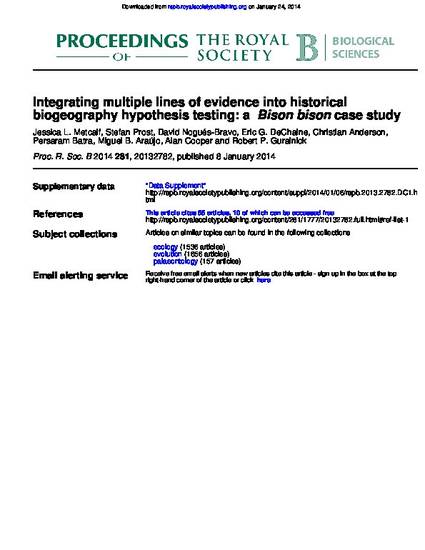
- Bioclimatic envelope models,
- Late Quaternary,
- Historical biogeography,
- Palaeoclimatic reconstructions
One of the grand goals of historical biogeography is to understand how and why species’ population sizes and distributions change over time. Multiple types of data drawn from disparate fields, combined into a single modelling framework, are necessary to document changes in a species’s demography and distribution, and to determine the drivers responsible for change. Yet truly integrated approaches are challenging and rarely performed. Here, we discuss a modelling framework that integrates spatio-temporal fossil data, ancient DNA, palaeoclimatological reconstructions, bioclimatic envelope modelling and coalescence models in order to statistically test alternative hypotheses of demographic and potential distributional changes for the iconic American bison (Bison bison). Using different assumptions about the evolution of the bioclimatic niche, we generate hypothetical distributional and demographic histories of the species. We then test these demographic models by comparing the genetic signature predicted by serial coalescence against sequence data derived from subfossils and modern populations. Our results supported demographic models that include both climate and human-associated drivers of population declines. This synthetic approach, integrating palaeoclimatology, bioclimatic envelopes, serial coalescence, spatio-temporal fossil data and heterochronous DNA sequences, improves understanding of species’ historical biogeography by allowing consideration of both abiotic and biotic interactions at the population level.
This link includes supplemental materials.
http://rspb.royalsocietypublishing.org/content/281/1777/20132782
Available at: http://works.bepress.com/eric_dechaine/7/

This link includes supplemental materials.
http://rspb.royalsocietypublishing.org/content/281/1777/20132782